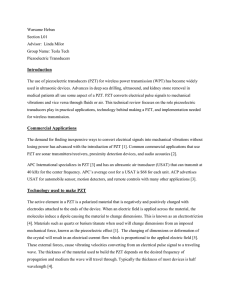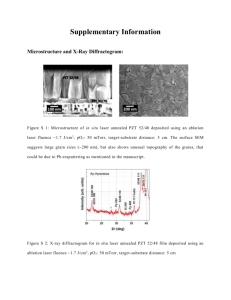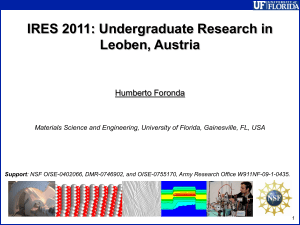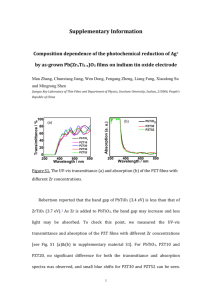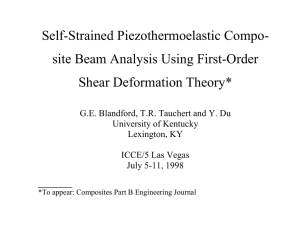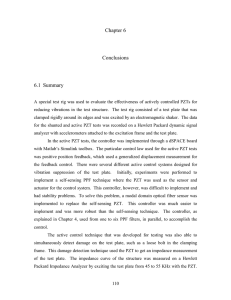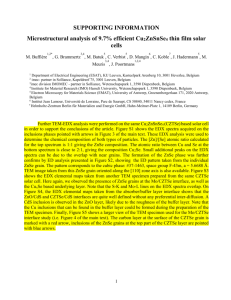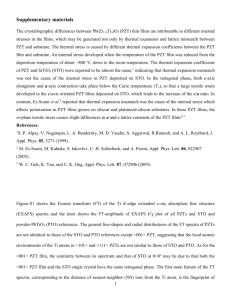Arredondo et al_JAP_2011_supplementary
advertisement
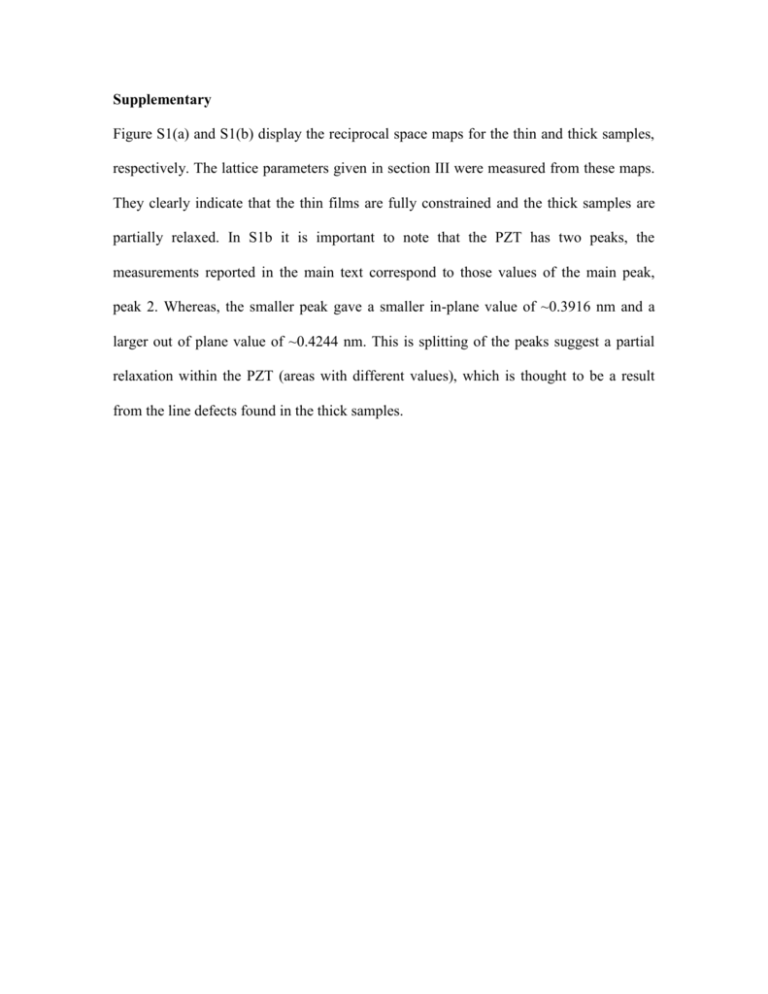
Supplementary Figure S1(a) and S1(b) display the reciprocal space maps for the thin and thick samples, respectively. The lattice parameters given in section III were measured from these maps. They clearly indicate that the thin films are fully constrained and the thick samples are partially relaxed. In S1b it is important to note that the PZT has two peaks, the measurements reported in the main text correspond to those values of the main peak, peak 2. Whereas, the smaller peak gave a smaller in-plane value of ~0.3916 nm and a larger out of plane value of ~0.4244 nm. This is splitting of the peaks suggest a partial relaxation within the PZT (areas with different values), which is thought to be a result from the line defects found in the thick samples. (a) (b) Figure S1. Reciprocal space mapping for: (a) thin and (b) thick samples. Figure S2 displays a high-resolution Z-contrast image for the PZT/LSMO 30-35 sample that clearly reveals smooth interfaces and no structural defects are visible. The contrast variation in form of white lines, observed in Fig. 5(a) and 5(c), could arise from simply strain contrast. Figure S2. [001] Z-contrast image of the PZT/LSMO 30-35 sample. To investigate if the Pb diffusion shown in Fig. 7 is strictly confined to areas containing planar defects and also to confirm the previous EDX line scans, a second set of EDX maps were acquired in an area free from faults. Figure S3(a) displays a Z-contrast image for a clear (defect-free) [001] PZT/LSMO 50-55 interface. The EDX analysis was acquired from a 20 x 30 nm2 area (enclosed in the white box). Figure S3(c) is the HAADF pre acquisition image and Figs. S3(d)-S3(g) present X-ray elemental maps for Pb Mα, Sr Kα, Mn Kα and Zr Lα. These elemental maps evidently indicate no significant diffusion at the interface (marked by the white dotted line). Furthermore, although the majority of the line scans (acquired from areas containing defects) indicated Pb diffusion at the interface, three showed no Pb diffusion (acquired from defect free areas), as shown in Fig. S3(b). Figure S3. EDX data set. (a) [001] PZT/LSMO 50-55 Z-contrast image, showing a 20x30 nm2 area (enclosed in the white box) used to acquire the EDX elemental maps. (c) HAADF pre acquisition image used to generate the elemental maps. X-ray elemental maps for: (d) Pb Mα, (e) Sr Kα, (f) Mn Kα and (g) Zr Lα. The white and black dotted lines mark the interface. (b) EDX line scans for Sr-Kα (black solid line) and Pb –Mα (red dotted line), for the PZT/LSMO 50-55 sample, showing no Pb diffusion. The long vertical dotted lines indicate the interfaces.

